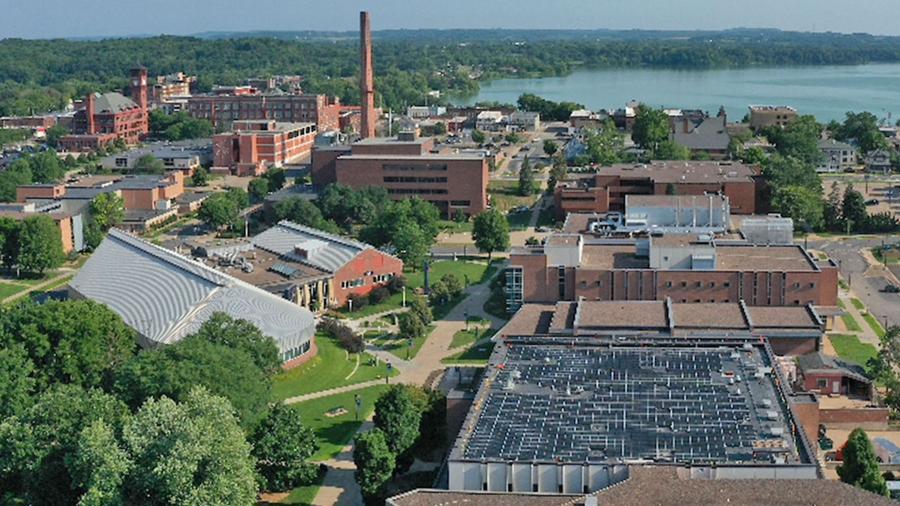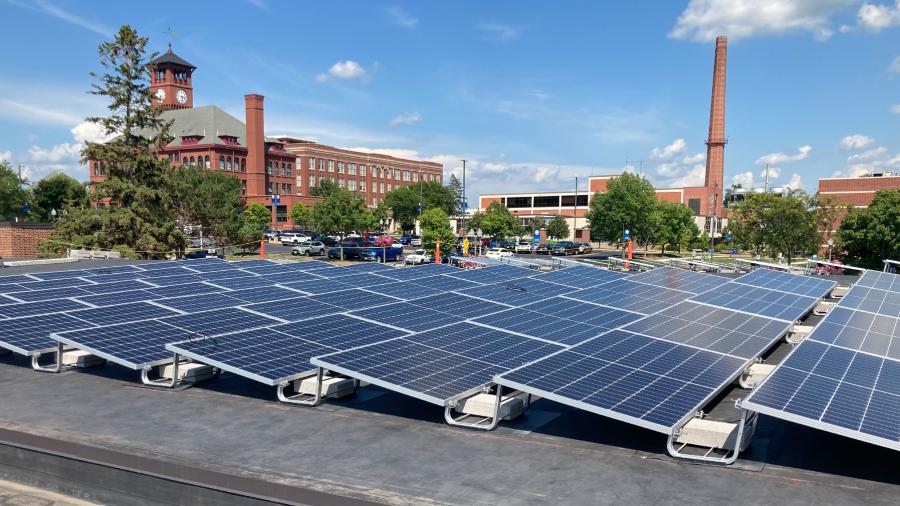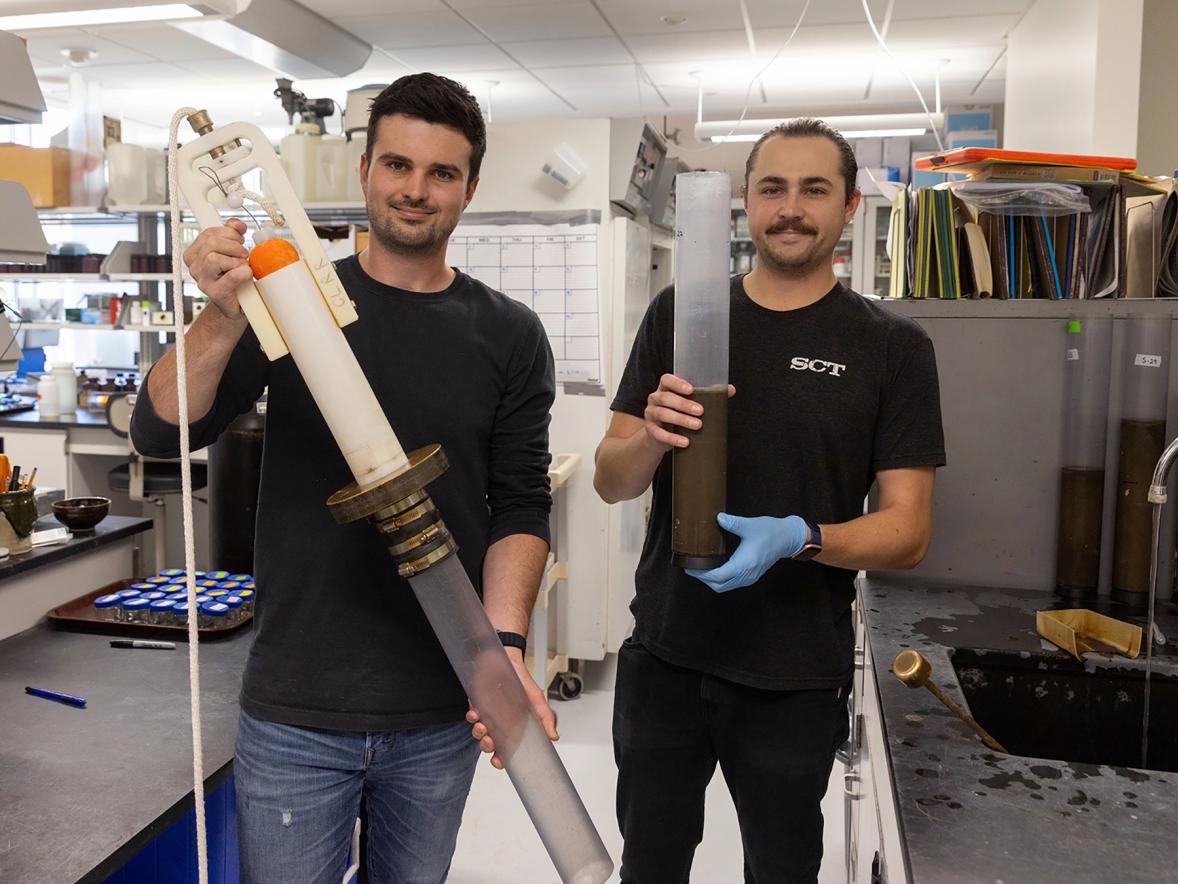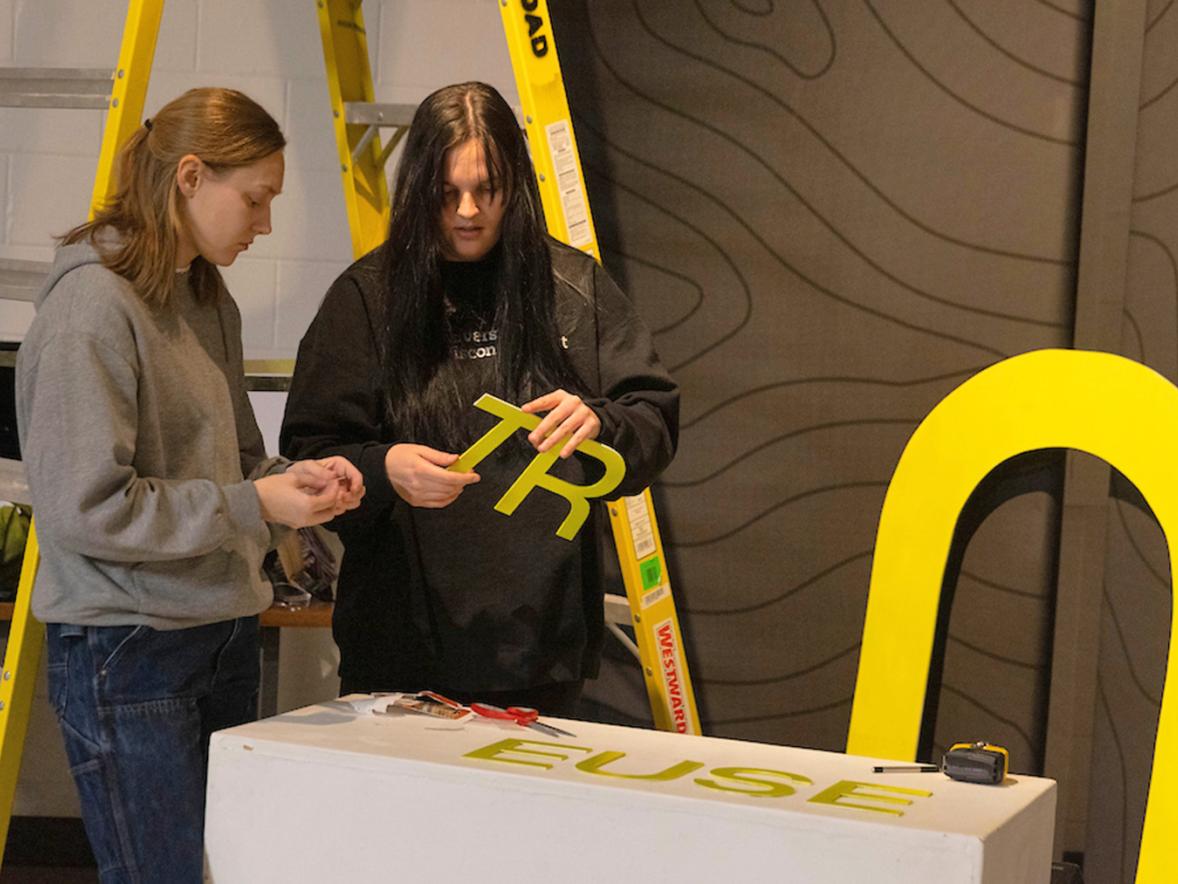UW-Stout’s largest solar photovoltaic array to date has been installed at Jarvis Hall Technology Wing, part of a multibuilding solar and energy efficiency upgrades project.
Contracted under Trane Inc., Eagle Point Solar of Dubuque, Iowa, recently installed 560 VSUN solar panels mounted on individually ballasted racking on the roof of the Technology Wing, which has a 24,160-square-foot high roof and a 14,801-square-foot low roof.
The panels will supply 200 kilowatts to Jarvis Hall Tech Wing and adjacent buildings. VSUN is a global company providing high-performance solar modules for reliable green power generation.

“Components of the system to support the solar panel will be on display at ground level outside Jarvis Hall Science Wing,” said Senior Facilities Officer Justin Utpadel. “We intend to provide educational information at the viewing location to provide students, staff and visitors with details about the project and how it benefits our campus and the environment.”
The display and information are still to be designed and determined.
Jarvis Hall Technology and Science wings house labs and classrooms for College of Science, Technology, Engineering, Mathematics and Management programs, as well as a greenhouse and the Math Teaching and Learning Center. More than 1,000 students have hands-on learning opportunities in these buildings each year.
The university’s General Services Building received solar panels this past week, which will supply 114.4 kilowatts to that building and adjacent buildings. “For reference, the system can power 10 to 20 average homes per day depending on season and weather,” explained Engineering Specialist Josh Kohnke.

As part of the project, upgraded LED lighting was installed in Applied Arts, Harvey Hall, Jarvis Hall and the Sports and Fitness Center, saving an estimated 1,274,449 kilowatt-hours. Destratification fans, which will provide an even greater reduction in energy usage, were installed in Johnson Fieldhouse and the Multipurpose Room of the Sports and Fitness Center; and building envelope weatherization improvements are planned for 22 campus buildings.
The engineering design report determined the project will reduce campus annual electric energy purchases by 9% and natural gas usage by 2%. It is expected to save UW-Stout approximately $172,187 annually. Payback on the cost is expected in about 16 years.
The savings will be measured, verified and guaranteed by the Energy Service Company. Franklin Energy, a conservation consultant that delivers energy efficiency programs for more than 60 utility and government partners across the U.S. and Canada, reviewed the proposal.
Sustainability Manager Kadi Wright is excited about the project. “It will decrease our energy consumption and continue our work of shifting to renewable energy,” she said.
As a Charter Signatory of the Carbon Commitment, the project will help UW-Stout’s commitment to being carbon-neutral by 2050, decreasing the university’s carbon emissions by 1,431 metric tons annually.
“We are committed to neutralizing greenhouse gas emissions by 2050, and this project is a step in that direction,” Wright added.
The budget is estimated at $2,767,000. Construction is expected to be completed in March 2024.
The project was approved by the Wisconsin State Building Commission last summer, part of a $71 million approval for key projects across the state to modernize infrastructure and to make sure buildings operate efficiently and safely.
A previous energy project, completed in the spring of 2021, added 122 solar panels to the existing 32 panels on the rooftop of Merle M. Price Commons, which houses the main University Dining facility.
The 145 solar panels, with 59.6 kilowatts, generate about 8% of the building’s energy needs and cover 25% of its roof. The project was funded thanks to $150,000 in student Green Fees, a student campus sustainability initiative.
The university switched from coal to natural gas as its main source of campus heat in March 2020.
“The last few years that we burned coal, we burned approximately 1,200 to 1,400 tons per year. Back when we used coal as a primary winter fuel, we burned 3,000 to 4,000 tons per year,” Kohnke said. “With natural gas omitting roughly 50% less carbon dioxide than coal, this project reduced emissions by an estimated 1,716 to 5,720 tons.”







